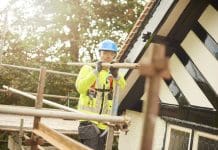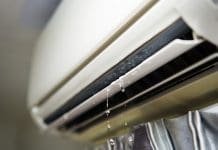Kevin Frewin, Technical Development Manager, BSI Assurance explains what CE marking is and what it means in relation to the Construction Products Regulation…
Although manufacturers are responsible for CE marking – a mandatory process for many products sold within the European Community – it’s important that building contractors and specifiers of construction products understand what CE marking means, and also what this means in relation to the Construction Products Regulation (CPR).
CE marking provides customers with some reassurance that the products they are buying are safe. The ‘CE’ mark on a product means that a manufacturer claims that it conforms to minimum legal requirements – for example for health and safety, as specified by EU regulators.
How does this relate to the Construction Products Regulation?
Under the Construction Products Regulation, manufacturers must affix CE marking to all of their products covered by a harmonised European standard (HEN). CE marking is therefore key to manufacturers supplying the construction industry in Europe, although there are many variations relating to different products in different markets, according to national regulations. The CPR covers hundreds of construction products from doors and windows to cement and steelwork.
BSI’s Notified Body status for many European Directives and Regulations, including the CPR, enables it to offer third party testing and factory production control assessments, where products require it. We can offer support for manufacturers wishing to affix CE marking to their products including fire alarms and detectors, chimneys, road marking and traffic signs and glass and structural metal products.
Since July 2014, structural steelwork and aluminium fall under the Construction Products Regulation (CPR) which means CE marking for structural steel or aluminium must be secured to show compliance with EN 1090-1 the harmonised European standard that applies to structural metalwork. This covers any structural component that has been designed and fabricated to meet BS EN 1991 series of standards (Eurocode 3 and 9) for steel and aluminium structures in buildings.
The Construction Products Regulation harmonises the methods of assessment and testing, the means of declaration of product performance and the systems employed for the assessment and verification of consistency of performance. Crucially however, it does not harmonise national building regulations. A CE marked product that can be sold legally anywhere in the EU will not necessarily be allowable for a specific purpose under national building regulations.
What are the limitations?
Limitations to CE marking remain for both manufacturers and their customers; manufacturers that produce to rigorous standards cannot rely on CE marking to demonstrate the superior quality of their products, while building contractors cannot be certain that CE marking signifies fitness for their intended purpose.
Organisations might consider certification to, and display of, an independent BSI Kitemark™ which provides a much stronger statement of product quality, giving manufacturers the ability to differentiate their products – and providing construction industry specifiers and contractors with genuine assurance of product quality. The Kitemark is a voluntary, independent third-party certification quality mark. To achieve it, a manufacturer must have a comprehensive quality management system based on ISO 9001, or a recognised production control system combined with initial product-type testing and regular audit testing.
The BSI Kitemark is widely recognised in global markets, not just the EU, giving products a high level of credibility in the eyes of potential export customers.
How do Eurocodes fit in?
Eurocodes provide common structural design rules for everyday use for the design of whole structures and parts of works and structural construction products of both a traditional and an innovative nature. They have a direct relationship with the Construction Products Regulations (CPR). They comprise of the following standards generally consisting of a number of parts:
- EN 1990 Eurocode : Basis of Structural Design;
- EN 1991 Eurocode 1: Actions on structures;
- EN 1992 Eurocode 2: Design of concrete structures;
- EN 1993 Eurocode 3: Design of steel structures;
- EN 1994 Eurocode 4: Design of composite steel and concrete structures;
- EN 1995 Eurocode 5: Design of timber structures;
- EN 1996 Eurocode 6: Design of masonry structures;
- EN 1997 Eurocode 7: Geotechnical design;
- EN 1998 Eurocode 8: Design of structures for earthquake resistance;
- EN 1999 Eurocode 9: Design of aluminium structures.
Although Eurocodes are of a different nature from harmonised product standards, there is a need to achieve a full compatibility of technical specifications for construction products with the Eurocodes.
Furthermore, all the information accompanying the CE Marking of the construction products which use the Eurocodes shall clearly mention which Nationally Determined Parameters have been taken into account.
Eurocode standards recognise the responsibility of regulatory authorities in each Member State and have safeguarded their right to determine values related to regulatory safety matters at national level where these continue to vary from State to State.
If you manufacture or import products that are within the scope of the Construction Products Regulation, you will be required to declare that any product complies with the regulation and displays CE marking, before they can be sold in the UK and Europe. As a Notified Body for Construction Products Regulation, BSI has a wealth of expertise in this industry. We have dedicated laboratories including our Centre of Excellence in Hemel Hempstead, where we can thoroughly test your products, and a certification team with a wealth of experience ready to provide you with ongoing support to ensure you meet the requirements of these regulation.
Kevin Frewin
Technical Development Manager
BSI Assurance
Tel: 0845 086 9001













![[VIDEO]What to expect when you’re inspecting: Using DorTrak for fire door inspections](https://www.pbctoday.co.uk/news/wp-content/uploads/2025/02/maxresdefault-218x150.jpg)